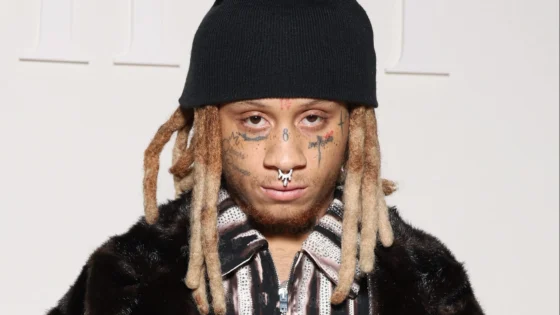Film
Fantasia 2017: ‘Blade of the Immortal’ is a Surprising Dud
‘Blade of the Immortal’ fails with its kitchen-sink approach.
As we’ve already discussed recently, manga adaptations are an extremely tricky enterprise. Especially when adapting a longer work, there are numerous pitfalls that a feature film can tumble into. Thankfully, there have been recent examples of how to pull this off successfully, particularly the excellent Tokyo Ghoul. But unfortunately, we now find ourselves with an example of the opposite: Takashi Miike’s Blade of the Immortal, adapted from the manga by Hiroaki Samura, feels like an infinitely more flawed counterpart to Miike’s other 2017 anime/manga adaption, Jojo’s Bizarre Adventure: Diamond is Unbreakable. While Jojo feels almost restrained and sensible in how much of its source material it chooses to bring to the screen, Blade of the Immortal is overstuffed with characters and story elements from the comic crammed willy-nilly into a two-and-a-half hour runtime. This makes for a film that can only be described as an inelegant, awkwardly-paced lumbering beast of a movie that only grows more frustrating if you’re familiar with the source material.
The film follows Manji, a disgraced samurai cursed with immortality after a lifetime of violence. Manji becomes a bodyguard for Rin, a young girl and last survivor of her father’s swordsmanship school, which fell to the ruthless Itto-Ryu school. The Itto-Ryu, led by the swordsman Anotsu Kagehisa and crammed full of psychopaths and rogues, is dedicated to smashing every other sword school in Edo and establishing their own credo as the one truth path of swordsmanship. This brings Rin and Manji into conflict with a variety of swordsmen and assassins, to say nothing of government agents similarly out to squash the Itto-Ryu’s ambitions.
Unsurprising for a film that attempts to condense over a hundred issues of a comic into a feature film, Blade of the Immortal’s biggest downfall is its pacing and storytelling. The narrative of the film feels painfully episodic and compartmentalized, with the protagonists going from encounter to encounter with very little sense of actual progress. Character development feels similarly awkward, with what should be major moments and character turns seemingly happening between scenes. One instance Manji seems unwilling to help Rin in her quest for revenge, but then by the next scene he’s apparently on board.
All the other earmarks of an over-ambitious adaptation are present. Characters who seem like they should be important seemingly exit and re-enter the film at will, often with barely enough time to quickly monologue their backstory before bowing out. To call the film’s cast overstuffed is being kind; this film has more characters than it knows what to do with. By the end we’ve gained a new set of villains, and the final battle rushes to tie up loose ends from the previous two-plus hours of scattershot scripting. In almost every sense of the word, the storytelling in Blade of the Immortal is a bit of a mess, and an especially frustrating ones for fans of the manga. If you’re looking forward to interesting and nuanced characters from the book like Makie or Magatsu being realized onscreen, then brace yourself for them and several others’ reduction to walk-ons.
Equally frustrating and distracting is Miike’s surprising failure to effectively realize the manga’s visuals. The costume department in particular feels shockingly lackluster, though not for a lack of adherence to the costume designs of the source material. All the major characters are recognizable, but the film almost sticks too close to the inspiration. Attempts to bring visuals like Magatsu’s spikey hair or the costumes of the various characters into three dimensions often come across as cartoonish in their simplicity, lacking in a certain crucial depth or texture. More often than not, characters will look more like cosplayers than believable inhabitants of the world, clad in outfits that look far to clean and manufactured. This worked fine in the cartoonish world of Jojo, but feels painfully out of step with the gritty, violent backdrop of Blade.
These problems seem even more frustrating thanks to how close Blade of the Immortal otherwise gets to being something really interesting. The cinematography by Nobuyasu Kita, Miike’s frequent collaborator, is often beautiful. The fight sequences, while not the most exciting or inventive, are at least energetic and coherently assembled, and often rife with Miike’s usual black humor. But for fans of Miike and the manga, it feels surprising that he doesn’t completely nail it. This property is so thoroughly in his wheelhouse, and yet it feels laden with missteps and bad decisions.
Blade of the Immortal’s failure seems all the more severe when weighed against the success of two other manga adaptations that screened at this year’s Fantasia fest: Jojo and Tokyo Ghoul. While those films successfully transplanted the stories and characters of the source material onto film by exercising narrative restraint, Blade fails with its kitchen-sink approach. It’s a sad thing to report that Miike’s 100th film, a landmark in a storied career, is an overlong exercise in overindulgence and excess, but there you have it.
FANTASIA INTERNATIONAL FILM FESTIVAL • JULY 13 – AUGUST 2, 2017

































